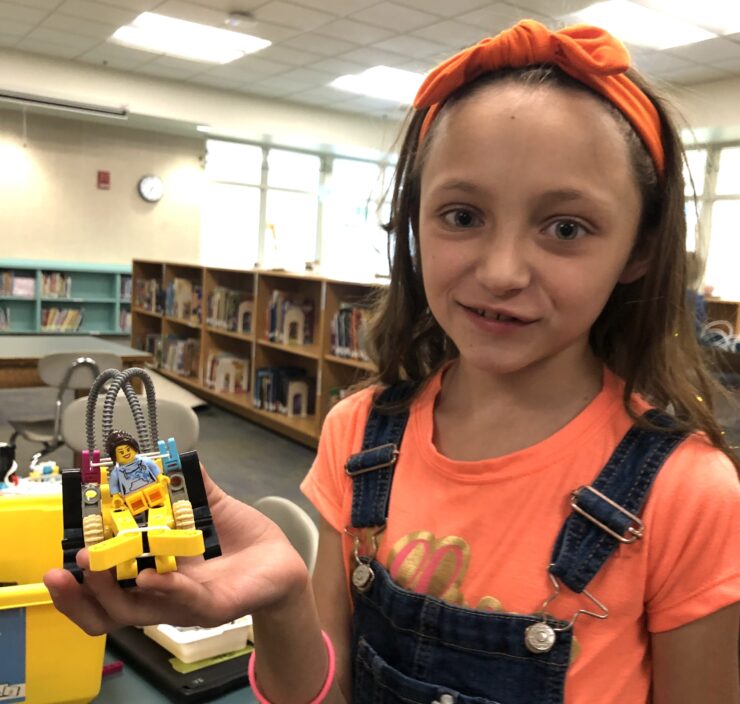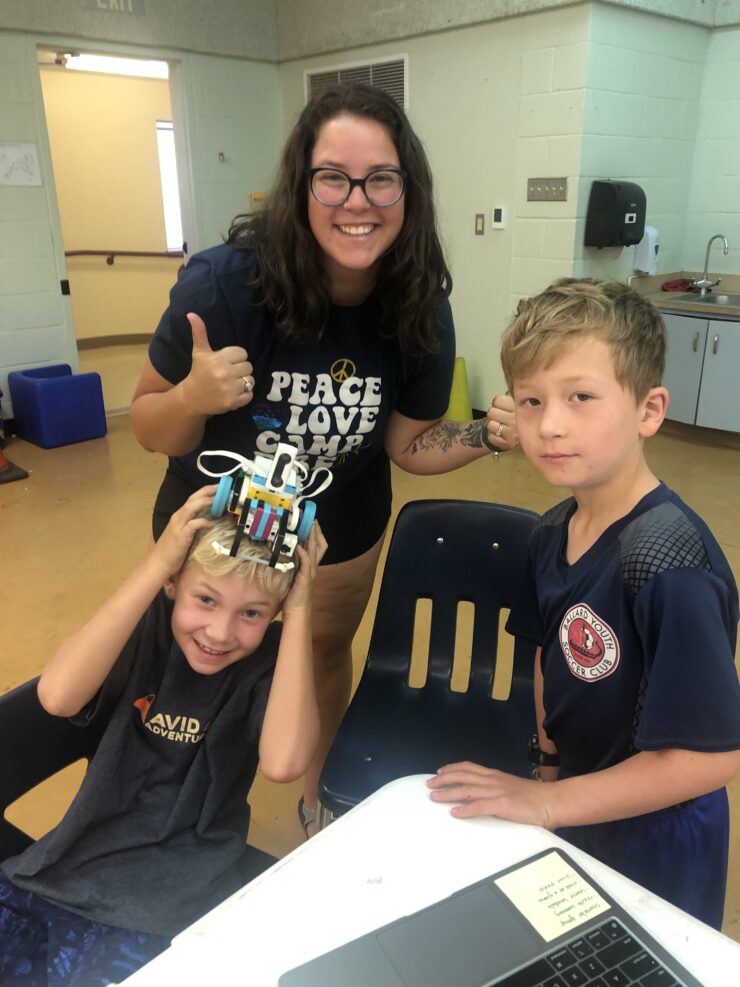Building on Our STEM Foundations
Building on our STEM Foundations
 Have you ever had the experience of being fully in the moment … and only later realizing how well that presence set you up for the future? Maybe you got so in the flow of doing something you love that you didn’t realize how much you learned until months later. Maybe what felt like naturally following your interests eventually led you to a favorite place, a new hobby or even a career.
Have you ever had the experience of being fully in the moment … and only later realizing how well that presence set you up for the future? Maybe you got so in the flow of doing something you love that you didn’t realize how much you learned until months later. Maybe what felt like naturally following your interests eventually led you to a favorite place, a new hobby or even a career.
At Camp Fire, we’re relentlessly focused on now. It’s one of the things that makes us different from other youth organizations! We care about how young people are connecting to themselves, nature, and each other today. We like to say that we’re not overly fixated on the future.
But a funny thing happens when you do what’s best for now — being present, following your passions, prioritizing connection. Those seeds grow. And keep growing!
That’s what has been happening with science, technology, engineering, and math (STEM) learning at Camp Fire: We’ve been planting seeds for more than a century and just recently naming the forest we’re thriving in.
Embracing our STEM roots
A few years ago, Camp Fire started surveying our affiliates about STEM learning practices.
“One of the really interesting things we found was that a huge percentage of our programs were informally incorporating STEM,” said Shawna Rosenzweig, Camp Fire President. “But they didn’t consider their programs to be STEM programs.”
For example, outdoor programs were teaching kids and teens to be curious about their observations in nature, to ask questions and to learn more about the ecosystems they live in. In other words, they were teaching young people to think like environmental scientists!
 “But many of our direct delivery and program staff said they didn’t consider themselves to be STEM educators,” said Shawna, “even if they were facilitating STEM activities or leading environmental education programs.”
“But many of our direct delivery and program staff said they didn’t consider themselves to be STEM educators,” said Shawna, “even if they were facilitating STEM activities or leading environmental education programs.”
Shawna and the leadership team saw that there was an opportunity to help both staff and program participants expand how we define STEM, get more strategic about STEM programming … and claim the name.
Collaborating with Imagine Science
To that end, Camp Fire is collaborating with Imagine Science, a nonprofit that works with youth programs to help bring equitable STEM opportunities to more than 18 million young people around the country.
“This partnership helps us scale a national STEM strategy,” Shawna explained. “It also sets us up to collaborate with other organizations supporting young people.”
Camp Fire and Imagine Science are going to build a community of practice across Camp Fire affiliates, beginning with an initial pilot group of five this fall.
“We’ll be sharing best practices and experiences, participating in professional development together and using a set evaluation tool for continuous improvement,” explained Shawna. The affiliates won’t be tied to a specific curriculum but encouraged to design programming that fits their local needs and opportunities.
 “We’re excited to think about how our mission of connection to the outdoors, others and self-integrates with STEM,” said Shawna. “I think it’s going to be a really fun process to see what Camp Fire’s unique flavor is in this space. I think we’re going to find that so many of our practices and ways of working with young people are indeed STEM-related.”
“We’re excited to think about how our mission of connection to the outdoors, others and self-integrates with STEM,” said Shawna. “I think it’s going to be a really fun process to see what Camp Fire’s unique flavor is in this space. I think we’re going to find that so many of our practices and ways of working with young people are indeed STEM-related.”
The Imagine Science collaboration is being supported by two corporate partnerships (official announcements coming soon!), which are helping fund professional development and providing access to other STEM learning resources. For example, The Achievery is a free digital library of STEM learning content. You can use the QR code below to sign up and explore.
Imagining a STEM-ier present — and future
Building on the STEM work Camp Fire affiliates are already doing has the double benefit of improving young people’s present and future. Camp Fire offers a safe place to explore new interests and develop new skills. A kid who has struggled in a science classroom in the past, for example, may get a second chance to discover a love for science through a Camp Fire nature program.
“My number one hope and goal is that young people, especially those who have been historically excluded, see STEM careers as a pathway and part of their potential,” Shawna said. She also called out the potential for staff members to embrace their STEM educator credentials — and see where those skills might take them next.
This kind of growth is called “workforce development” in some circles. Even though Camp Fire is now-focused, we know making the most of today also means better tomorrows ahead.
“Ultimately, we’re preparing young people for the workforce they want — and it’s not even necessarily the workforce that exists today,” Shawna said. “We are helping them develop crucial skills for success, however they define it, whether they are designing their own career path or landing their perfect first job.”
